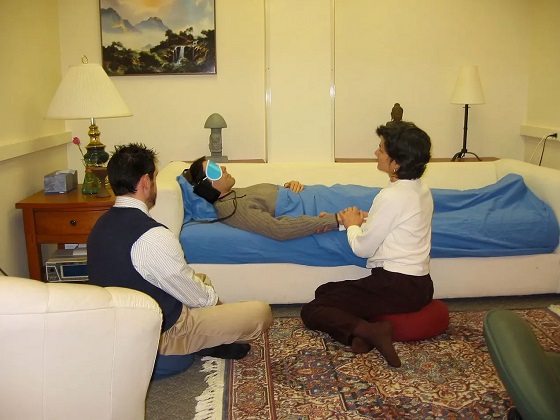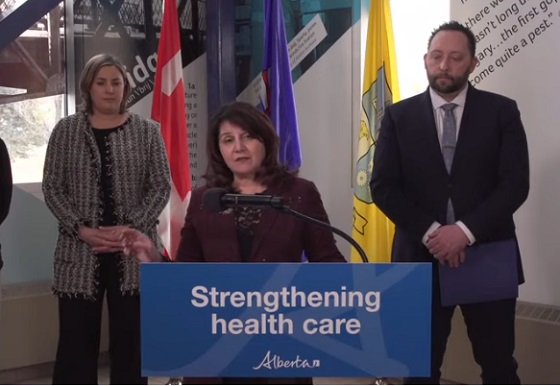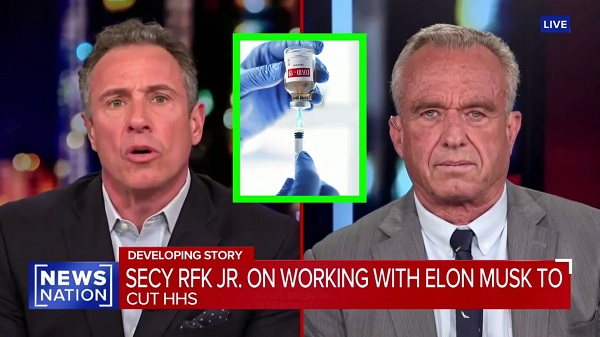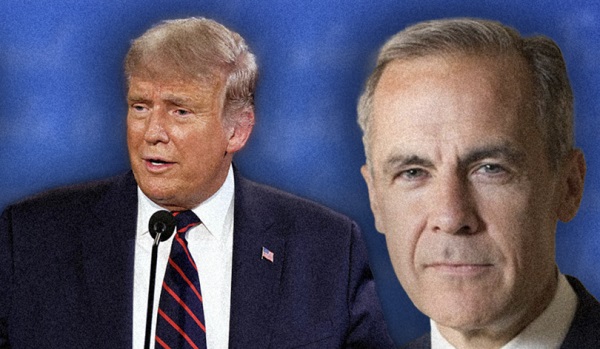Health
University of Toronto Study Finds Teen Marijuana Use Tied To Dramatic Increased Risk Of Psychosis

 From the Daily Caller News Foundation
From the Daily Caller News Foundation
A study published Wednesday found that teens who use cannabis are 11 times more likely to be diagnosed with a psychotic disorder, according to NBC News.
The study was led by researchers from the University of Toronto and examined teenage patients who used cannabis within the last year and those who did not, according to NBC News. When the study was further limited to teens who were sent to the emergency room or hospitalized, it showed a 27-fold increase in the likelihood of being diagnosed with psychotic illness.
“I think that there’s enough evidence out there for us to give recommendations that teens probably shouldn’t be using cannabis,” Andre McDonald, a postdoctoral research fellow at McMaster University and lead author of the study, said, according to NBC News. “If we can somehow ask teens to delay their use until their brain has developed a little further, I think that would be good for public health.”
While the research does not prove that cannabis use by teens causes psychosis, Dr. Leslie Hulvershorn, a child psychiatrist who was not involved with the study, argued it was unlikely that the teens were already predisposed to these kinds of mental health issues, according to NBC News. The study noted that the risk of psychosis did not spike for users between the ages of 20 and 33 and Dr. Kevin Gray, a professor of psychiatry at the Medical University of South Carolina who was not a part of the study, told NBC News that the increase in risk of psychosis likely had to do with brain development at different stages of life.
“There’s something about that stage of brain development that we haven’t yet fully characterized — where there’s a window of time where cannabis use may increase the risk of psychosis,” Gray said. “This study really puts a fine point on delaying cannabis use until your 20s may mitigate one of the most potentially serious risks.”
Another study from July 2023 found that marijuana addiction made individuals four times more likely to later be diagnosed with bipolar disorder with psychotic symptoms and two times more likely to be diagnosed with depression. Recreational marijuana use has been legalized in 24 states and Washington D.C., and 13 states have legalized the substance for medical use, according to CBS News.
Break The Needle
Why psychedelic therapy is stuck in the waiting room

There is mounting evidence of psychedelics’ effectiveness at treating mental disorders. But researchers face obstacles conducting rigorous studies
In a move that made international headlines, America’s top drug regulator denied approval last year for psychedelic-assisted therapy to treat post-traumatic stress disorder.
In its decision, the U.S. Food and Drug Administration cited concerns about study design and inadequate evidence to assess the benefits and harms of using the drug MDMA.
The decision was a significant setback for psychedelics researchers and veterans’ groups who had been advocating for the therapy to be approved. It is also reflective of a broader challenge faced by researchers keen to validate the therapeutic potential of psychedelics.
“Sometimes I feel like it’s death by 1,000 paper cuts,” said Leah Mayo, a researcher at the University of Calgary.
“If the regulatory burden were a little bit less, that would be helpful,” added Mayo, who holds the Parker Psychedelics Research Chair at the Psychedelic and Cannabinoid Therapeutics Lab. The lab develops new treatments for mental health disorders using psychedelics and cannabinoids.
Sources say the weak research body behind psychedelics is due to a complex interplay of factors. But they would like to see more research conducted to make psychedelics more accessible to people who could benefit from them.
“If you want [psychedelics] to work within existing health-care infrastructure, you have to play by [Canadian research] rules,” said Mayo.
“Therapy has to be reproducible, it has to be evidence-based, it has to be grounded in reality.”
Psychedelics in Canada
Psychedelics are hallucinogenic substances such as psilocybin, MDMA and ketamine that alter people’s perceptions, mood and thought processes. Psychedelic therapy involves the use of psychedelics in guided sessions with therapists to treat mental health conditions.
Psychedelics are generally banned for possession, production and distribution in Canada. However, two per cent of Canadians consumed hallucinogens in 2019, according to the latest Canadian Alcohol and Drugs Survey. Psychedelics are also used in Canada and abroad in unregulated clinics and settings to treat conditions such as substance use disorder, post-traumatic stress disorder (PTSD) and various mental disorders.
“The cat’s out of the bag, and people are using this,” said Zachary Walsh, a professor in the Department of Psychology at the University of British Columbia.
Within Canada, there are three ways for psychedelics to be accessed legally.
The federal health minister can approve their use for medical, scientific or public interest purposes. Health Canada runs a Special Access Program that allows doctors to request the use of unapproved drugs for patients with serious conditions that have not responded to other treatments. And Health Canada can approve psychedelics for use in clinical trials.
Researchers interested in conducting clinical trials involving psychedelics face significant hurdles.
“There’s been a concerted effort — and it’s just fading now — to mischaracterize the risks of these substances,” said Walsh, who has conducted several studies on the therapeutic uses of psychedelics. These include studies on MDMA-assisted therapy for PTSD, and the effects of microdosing psilocybin on stress, anxiety and depression.
This Substack is reader-supported.
To receive new posts and support my work, consider becoming a free or paid subscriber.
The U.S. government demonized psychedelic substances during its War on Drugs in the 1970s, exaggerating their risks and blocking research into their medical potential. Influenced by this war, Canada adopted similar tough-on-drugs policies and restricted research.
Today, younger researchers are pushing forward.
“New ideas really come into the forefront when the people in charge of the old ideas retire and die,” said Norman Farb, an associate professor in the Department of Psychology at the University of Toronto.
But it remains a challenge to secure funding for psychedelic research. Government funding is limited, and pharmaceutical companies are often hesitant to invest because psychedelic-assisted therapy does not generally fit the traditional pharmaceutical model.
“It’s not something that a pharmaceutical company wants to pay for, because it’s not going to be a classic pharmaceutical,” said Walsh.
As a result, many researchers rely on private donations or venture capital. This makes it difficult to fund large-scale studies, says Farb, who has faced institutional obstacles researching microdosing for treatment-resistant depression.
“No one wants to be that first cautionary tale,” he said. “No one wants to invest a lot of money to do the kind of study that would be transparent if it didn’t work.”
Difficulties in clinical trials
But funding is not the only challenge. Sources also pointed to the difficulty of designing clinical trials for psychedelics.
In particular, it can be difficult to implement a blind trial process, given the potent effects of psychedelics. Double blind trials are the gold standard of clinical trials, where neither the person administering the drug or patient knows if the patient is receiving the active drug or placebo.
Health Canada also requires researchers to meet strict trial criteria, such as demonstrating that the benefits outweigh the risks, that the drug treats an ongoing condition with no other approved treatments, and that the drug’s effects exceed any placebo effect.
It is especially difficult to isolate the effects of psychedelics. Psychotherapy, for example, can play a crucial role in treatment, making it difficult to disentangle the role of therapy from the drugs.
Mayo, of the University of Calgary, worries the demands of clinical trial models are not practical given the limitations of Canada’s health-care system.
“The way we’re writing these clinical trials, it’s not possible within our existing health-care infrastructure,” she said. She cited as one example the expectation that psychiatrists in clinical trials spend eight or more hours with each patient.
Ethical issues
Psychedelics research can also raise ethical concerns, particularly where it involves individuals with pre-existing mental health conditions.
A 2024 study found that people who visited an emergency room after using hallucinogens were at a significantly increased risk of developing schizophrenia — raising concerns that trials could harm vulnerable participants.
Another problem is a lack of standardization in psychedelic therapy. “We haven’t standardized it,” said Mayo. “We don’t even know what people are being taught psychedelic therapy is.”
This concern was underscored in a 2015 clinical trial on MDMA in Canada, where one of the trial participants was subjected to inappropriate physical contact and questioning by two unlicensed therapists.
Mayo advocates for the creation of a regulatory body to standardize therapist training and prevent misconduct.
Others have raised concerns about whether the research exploits Indigenous knowledge or cultural practices.
“There’s no psychedelic science without Indigenous communities,” said Joseph Mays, a doctorate candidate at the University of Saskatchewan.
“Whether it’s medicalized or ceremonial, there’s a direct continuity with Indigenous practices.”
Mays is an advisor to the Indigenous Reciprocity Initiative, which funnels psychedelic investments back to Indigenous communities. He believes those working with psychedelics must incorporate reciprocity into their work.
“If you’re using psychedelics in any way, it only makes sense that you would also have a commitment to fighting for the rights of [Indigenous] communities, which are still lacking basic necessities,” said Mays, suggesting that companies profiting from psychedelic medicine should contribute to Indigenous causes.
Despite these various challenges, sources remained optimistic that psychedelics would eventually be legalized — although not due to their work.
“It’s inevitable,” said Mays. “They’re already widespread, being used underground.”
Farb agrees. “A couple more research studies is not going to change the law,” he said. “Power is going to change the law.”
This article was produced through the Breaking Needles Fellowship Program, which provided a grant to Canadian Affairs, a digital media outlet, to fund journalism exploring addiction and crime in Canada. Articles produced through the Fellowship are co-published by Break The Needle and Canadian Affairs.
Subscribe to Break The Needle.
Our content is always free – but if you want to help us commission more high-quality journalism, consider getting a voluntary paid subscription.
Addictions
There’s No Such Thing as a “Safer Supply” of Drugs

By Adam Zivo
Sweden, the U.K., and Canada all experimented with providing opioids to addicts. The results were disastrous.
[This article was originally published in City Journal, a public policy magazine and website published by the Manhattan Institute for Policy Research. We encourage our readers to subscribe to them for high-quality analysis on urban issues]
Last August, Denver’s city council passed a proclamation endorsing radical “harm reduction” strategies to address the drug crisis. Among these was “safer supply,” the idea that the government should give drug users their drug of choice, for free. Safer supply is a popular idea among drug-reform activists. But other countries have already tested this experiment and seen disastrous results, including more addiction, crime, and overdose deaths. It would be foolish to follow their example.
The safer-supply movement maintains that drug-related overdoses, infections, and deaths are driven by the unpredictability of the black market, where drugs are inconsistently dosed and often adulterated with other toxic substances. With ultra-potent opioids like fentanyl, even minor dosing errors can prove fatal. Drug contaminants, which dealers use to provide a stronger high at a lower cost, can be just as deadly and potentially disfiguring.
Because of this, harm-reduction activists sometimes argue that governments should provide a free supply of unadulterated, “safe” drugs to get users to abandon the dangerous street supply. Or they say that such drugs should be sold in a controlled manner, like alcohol or cannabis—an endorsement of partial or total drug legalization.
But “safe” is a relative term: the drugs championed by these activists include pharmaceutical-grade fentanyl, hydromorphone (an opioid as potent as heroin), and prescription meth. Though less risky than their illicit alternatives, these drugs are still profoundly dangerous.
The theory behind safer supply is not entirely unreasonable, but in every country that has tried it, implementation has led to increased suffering and addiction. In Europe, only Sweden and the U.K. have tested safer supply, both in the 1960s. The Swedish model gave more than 100 addicts nearly unlimited access through their doctors to prescriptions for morphine and amphetamines, with no expectations of supervised consumption. Recipients mostly sold their free drugs on the black market, often through a network of “satellite patients” (addicts who purchased prescribed drugs). This led to an explosion of addiction and public disorder.
Most doctors quickly abandoned the experiment, and it was shut down after just two years and several high-profile overdose deaths, including that of a 17-year-old girl. Media coverage portrayed safer supply as a generational medical scandal and noted that the British, after experiencing similar problems, also abandoned their experiment.
While the U.S. has never formally adopted a safer-supply policy, it experienced something functionally similar during the OxyContin crisis of the 2000s. At the time, access to the powerful opioid was virtually unrestricted in many parts of North America. Addicts turned to pharmacies for an easy fix and often sold or traded their extra pills for a quick buck. Unscrupulous “pill mills” handed out prescriptions like candy, flooding communities with OxyContin and similar narcotics. The result was a devastating opioid epidemic—one that rages to this day, at a cumulative cost of hundreds of thousands of American lives. Canada was similarly affected.
The OxyContin crisis explains why many experienced addiction experts were aghast when Canada greatly expanded access to safer supply in 2020, following a four-year pilot project. They worried that the mistakes of the recent past were being made all over again, and that the recently vanquished pill mills had returned under the cloak of “harm reduction.”
Subscribe for free to get BTN’s latest news and analysis – or donate to our investigative journalism fund.
Most Canadian safer-supply prescribers dispense large quantities of hydromorphone with little to no supervised consumption. Patients can receive up to 40 eight-milligram pills per day—despite the fact that just two or three are enough to cause an overdose in someone without opioid tolerance. Some prescribers also provide supplementary fentanyl, oxycodone, or stimulants.
Unfortunately, many safer-supply patients sell or trade a significant portion of these drugs—primarily hydromorphone—in order to purchase more potent illicit substances, such as street fentanyl.
The problems with safer supply entered Canada’s consciousness in mid-2023, through an investigative report I wrote for the National Post. I interviewed 14 addiction physicians from across the country, who testified that safer-supply diversion is ubiquitous; that the street price of hydromorphone collapsed by up to 95 percent in communities where safer supply is available; that youth are consuming and becoming addicted to diverted safer-supply drugs; and that organized crime traffics these drugs.
Facing pushback, I interviewed former drug users, who estimated that roughly 80 percent of the safer-supply drugs flowing through their social circles was getting diverted. I documented dozens of examples of safer-supply trafficking online, representing tens of thousands of pills. I spoke with youth who had developed addictions from diverted safer supply and adults who had purchased thousands of such pills.
After months of public queries, the police department of London, Ontario—where safer supply was first piloted—revealed last summer that annual hydromorphone seizures rose over 3,000 percent between 2019 and 2023. The department later held a press conference warning that gangs clearly traffic safer supply. The police departments of two nearby midsize cities also saw their post-2019 hydromorphone seizures increase more than 1,000 percent.
The Canadian government quietly dropped its support for safer supply last year, cutting funding for many of its pilot programs. The province of British Columbia (the nexus of the harm-reduction movement) finally pulled back support last month, after a leaked presentation confirmed that safer-supply drugs are getting sold internationally and that the government is investigating 60 pharmacies for paying kickbacks to safer-supply patients. For now, all safer-supply drugs dispensed within the province must be consumed under supervision.
Harm-reduction activists have insisted that no hard evidence exists of widespread diversion of safer-supply drugs, but this is only because they refuse to study the issue. Most “studies” supporting safer supply are produced by ideologically driven activist-scholars, who tend to interview a small number of program enrollees. These activists also reject attempts to track diversion as “stigmatizing.”
The experiences of Sweden, the United Kingdom, and Canada offer a clear warning: safer supply is a reliably harmful policy. The outcomes speak for themselves—rising addiction, diversion, and little evidence of long-term benefit.
As the debate unfolds in the United States, policymakers would do well to learn from these failures. Americans should not be made to endure the consequences of a policy already discredited abroad simply because progressive leaders choose to ignore the record. The question now is whether we will repeat others’ mistakes—or chart a more responsible course.
Our content is always free –
but if you want to help us commission more high-quality journalism,
consider getting a voluntary paid subscription.
-

 Daily Caller2 days ago
Daily Caller2 days agoBiden Administration Was Secretly More Involved In Ukraine Than It Let On, Investigation Reveals
-

 Business2 days ago
Business2 days agoTrump says ‘nicer,’ ‘kinder’ tariffs will generate federal revenue
-

 2025 Federal Election2 days ago
2025 Federal Election2 days agoPM Carney’s Candidate Paul Chiang Steps Down After RCMP Confirms Probe Into “Bounty” Comments
-

 2025 Federal Election2 days ago
2025 Federal Election2 days agoLiberal MP Paul Chiang Resigns Without Naming the Real Threat—The CCP
-

 2025 Federal Election2 days ago
2025 Federal Election2 days agoFight against carbon taxes not over yet
-

 2025 Federal Election1 day ago
2025 Federal Election1 day agoMark Carney refuses to clarify 2022 remarks accusing the Freedom Convoy of ‘sedition’
-

 Automotive1 day ago
Automotive1 day agoElectric cars just another poor climate policy
-

 Energy1 day ago
Energy1 day agoWhy are Western Canadian oil prices so strong?









